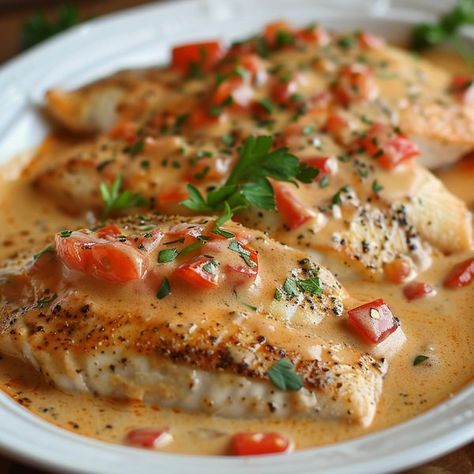Why These Seafood Delights Belong on Your Plate
Imagine yourself in a serene coastal setting, where the air carries a salty breeze and the horizon is painted with hues of gold. Picture this: you’re holding a plate filled with tender red snapper and succulent shrimp, each bite bringing you closer to culinary bliss. This isn’t just a dream—it’s a reality that awaits you. Whether you’re an experienced cook or someone who’s eager to explore new flavors, red snapper and shrimp are here to elevate your dining experience.
For many, these seafood treasures hold a special place in their hearts. They bring back memories of family gatherings, seaside vacations, or simply those quiet evenings when all you need is a comforting meal. As we dive deeper into the world of red snapper and shrimp, you’ll discover why they deserve a permanent spot in your kitchen repertoire.
Understanding Red Snapper and Shrimp
What Makes Red Snapper Special?
Red snapper, often celebrated for its vibrant color and delicate flavor, has long been a favorite among seafood enthusiasts. Found primarily in tropical and subtropical waters, this fish thrives in coral reefs and deep oceanic environments. Its firm texture makes it versatile enough for grilling, baking, or even raw preparations like ceviche.
Here’s what sets red snapper apart:
- Origin and Habitat: Native to the Gulf of Mexico and parts of the Atlantic Ocean, red snapper prefers warm waters rich in marine life.
- Flavor Profile: Known for its mild taste, red snapper pairs beautifully with citrusy marinades, herbs, and spices.
- Fun Fact: The name “red snapper” comes from its striking reddish hue, which intensifies after cooking.
When shopping for red snapper, look for fresh fillets with a glossy appearance and no strong odor. If opting for frozen options, ensure proper storage to maintain quality.
Unpacking the Versatility of Shrimp
Shrimp, another star of the seafood world, offers unmatched versatility and ease of preparation. Available year-round, shrimp can transform any dish—from quick weeknight meals to elegant dinner parties. Here’s why shrimp stands out:
- Nutritional Benefits: Rich in protein, low in fat, and packed with essential nutrients like zinc and iron, shrimp supports overall health without compromising taste.
- Selection Tips: Choose shrimp with a firm texture and a clean scent. Opt for wild-caught varieties if available, as they tend to have better flavor profiles compared to farm-raised alternatives.
To maximize freshness, store shrimp in the coldest part of your refrigerator until ready to use. For longer storage, freeze them in airtight containers or freezer bags.

Health Benefits of Red Snapper and Shrimp
Red Snapper: A Powerhouse of Nutrition
Incorporating red snapper into your diet can do wonders for your well-being. Below are some key reasons why this fish should be on your radar:
- Omega-3 Fatty Acids: Essential for brain function and reducing inflammation, omega-3s contribute to cardiovascular health.
- Vitamin D: Crucial for bone strength and immune system support, vitamin D is naturally present in red snapper.
- Selenium: An antioxidant mineral that protects cells from damage, selenium plays a vital role in maintaining optimal health.
By adding red snapper to your meals, you’re not only satisfying your palate but also nourishing your body.
Shrimp: More Than Just Tasty
Despite its small size, shrimp packs a powerful nutritional punch. Here’s how it benefits you:
- Low-Calorie Protein Source: Perfect for those watching their weight, shrimp delivers high-quality protein without excess calories.
- Heart Health Ally: Contrary to popular belief, shrimp contains heart-healthy fats and does not significantly raise cholesterol levels when consumed in moderation.
- Immune System Booster: With its abundance of vitamins and minerals, shrimp helps fortify your defenses against illnesses.
Remember, balance is key. While shrimp is incredibly nutritious, pair it with other wholesome ingredients to create balanced meals.
Cooking Techniques for Red Snapper and Shrimp
Mastering the art of preparing red snapper and shrimp ensures that every bite is as delightful as the last. Let’s explore two popular methods for cooking these delectable ingredients.
Grilling Red Snapper Perfection
Grilling brings out the natural flavors of red snapper while imparting a smoky char that enhances its appeal. Follow these steps for flawless results:
- Preheat your grill to medium-high heat.
- Brush both sides of the red snapper fillet with olive oil to prevent sticking.
- Season generously with salt, pepper, and your choice of herbs (such as thyme or rosemary).
- Place the fillet on the grill skin-side down and cook for about 6-8 minutes per side, depending on thickness.
- Remove once the flesh flakes easily with a fork.
Pro Tip: Marinate the fillets beforehand for added depth of flavor.
Pan-Seared Shrimp Recipes
Pan-searing shrimp is one of the quickest ways to enjoy this seafood marvel. Try this classic recipe for garlic butter shrimp:
- Heat a nonstick skillet over medium heat and add unsalted butter.
- Once melted, toss in minced garlic and sauté until fragrant.
- Add cleaned shrimp and cook for 2-3 minutes per side, flipping halfway through.
- Finish with a squeeze of fresh lemon juice and garnish with chopped parsley.
For variety, experiment with different sauces such as spicy tomato-based ones or creamy white wine reductions.

